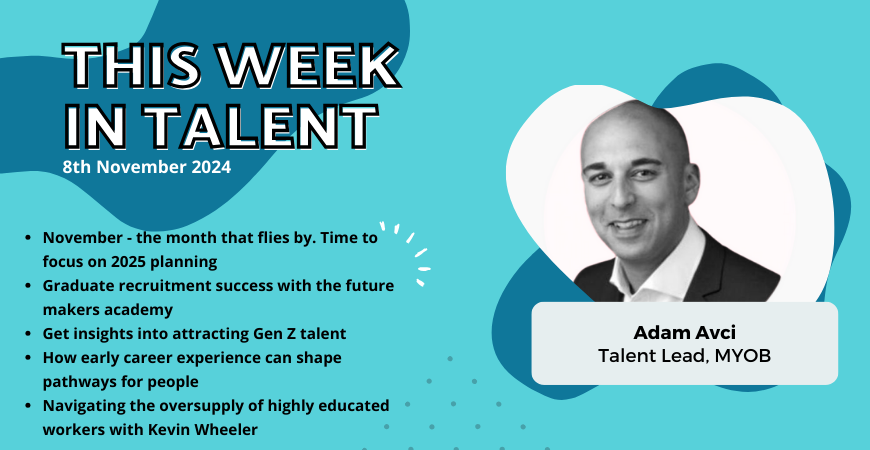Leaders have to be smart about where they focus resources and implement the right solutions to build the high performing and connected teams they are looking for.
Every team and organisation face a different set of challenges, and that means recognising the unique needs of your people and culture, in order to take focused actions that will lead to desired outcomes.
Using the right tools and approaches is critical to successfully identifying the unique people challenges and solving these in focused ways that will make a difference.
Here are three forward thinking organisations who are using Talent science and technology to solve their biggest people challenges.
1. Resolve turnover contributors and improve retention at a multi-site care provider in Perth
The annual turnover rate in this organisation last year sat at 30 percent. Their records identified that the carers who were leaving the organisation earliest were also the ones considered as top carers and had received the highest customer satisfaction ratings.
Leadership is trying to look into the issue and understand what makes carers leave their organisation, but is struggling to get objective insight into what is happening to effectively plan and implement better retention programs.
Identify unique turnover challenges
To overcome this, the organisation deployed an assessment program to compare the behavioural patterns of stayers vs leavers. They found that:
- Leavers tended to be anxious about
uncertainty, had a strong need to share their difficulties, and were
emotionally sensitive to events around them.
- These traits were also what made them highly rated Carers, in Relating with others.
- Stayers tended to feel less affected by difficulties, were less worried about things, and were emotionally centred. They were more resilient but also had a tendency to come across as less sensitive to client needs.
It was identified that the leavers had traits that led them to burnout faster and experience more stress-related challenges, thus illuminating the contributors to turnover and appropriate solutions.
Deliver targeted programs that improve retention
The organisation took targeted action that improved the retention of its top carers based on these insights, through implementing focused initiatives and solutions.
- Annual resilience programs for carers identified with similar emotional traits
- A new on-demand hotline for carers to be able to call any time to seek support
- Restructured job contracts to include write-ins that improved job security.
2. Develop and hire consciously towards the required culture in an Australian bank
The national bank received a workforce culture satisfaction rating of 60 percent and upon reviewing feedback, identified that a particularly weak area was inclusive leadership. Employees reported that their views and perspectives were not considered in decision-making processes; “leaders don’t care what we think and your opinion doesn’t matter”.
The organisation wanted to build a more inclusive work culture by helping its leaders to show more inclusive behaviours. They were also interested in understanding and addressing any biases in their hiring processes.
Identify challenges in culture and recruitment
To achieve these, they deployed a profiling tool to understand what leaders rated as inclusive had been doing right, and aimed to identify the specific behaviours that they could develop and reinforce across the organisation.
In reviewing specific strengths and potential development areas of leaders, they found:
- There was a lack of diversity, and it seemed that the organisation was hiring the same kind of people over and over again, suggesting a bias in the recruitment or succession process.
- Reviewing what behaviours distinguished an inclusive leader vs a developing leader,
- Inclusive leaders demonstrated behaviours associated with being upfront, unassuming, forgiving and empathic.
- Developing leaders tended to be more task oriented and focused on achieving results and resources.
- They met quotas but overlooked behaviours showed by more inclusive leaders.
It was determined that developing leaders were valued for driving achievement of results and sales figures, but they also needed to consider demonstrating the identified behaviours that would help them to be more inclusive.
Deliver informed solutions that improve culture and hiring
The Bank decided to start a program focused on driving the identified behaviours that would build a more inclusive work culture.
- Incorporating applicant profiling into recruitment processes to avoid bias and ensure informed and diverse hiring
- Designing and deploying a customised learning and development program focused on the identified areas
- Communicating and rewarding desirable behaviours by promoting stories of inclusiveness throughout the organisation
3. Diagnose disengagement and re-motivate employees at a fintech company in Singapore
At this tech firm, feedback on engagement is mixed, with 60 percent of their employees reported to be engaged, whilst the other 40 percent reported to be disengaged.
Leadership is struggling to understand why engagement levels are not higher. They have done their best to provide great financial incentives, effective structures and clear processes. They motivate employees through competitive remuneration and ensuring clear reporting lines and plans, so employees all have a sense of security.
Senior management is at a loss, because this is affecting their ability to deliver higher quality outcomes on time. They want to understand why, and what they can do to solve this challenge.
Identify causes of disengagement
They launched a program to examine the motivators of their engaged vs disengaged employees:
- Engaged employees strongly valued stability and security in job positions, order and structure in processes and stronger financial rewards.
- This was aligned with the motivation initiatives that the organisation focused on.
- Disengaged employees similarly valued job security and financial rewards, but differed in also strongly valuing freedom and autonomy with variety and stimulating experiences.
It was identified that the disengaged employees had needs that were different to the rest of the organisation, and their needs haven’t been unaccounted for.
Deliver relevant solutions that improve engagement
The organisation adapted their approach to employee engagement and job design to re-engage the employees whom they had overlooked in terms of differing values and needs.
- Adapting management style to collaboratively set goals, and then allowing these employees to figure out their own approach and method.
- Offering employees the chance for more variety in tasks by creating opportunities for them to be involved in different but relevant projects.
Understanding the unique challenges of your people and culture and solving them in focused ways is the key to individuals and teams that are focused on growth instead of just keeping afloat.
Using a little bit of creativity, contemporary behavioural science, and more holistic tools, you can also easily identify unique workforce challenges to make smarter decisions that drive faster and more successful outcomes, when it comes to hiring, developing and retaining Talent.
Organisation names have been de-identified for confidentiality.
Cover image: Shutterstock
This article was contributed by TalentIdentify.
Get together with over 1,300+ of your peers at this year’s ATC2020 DIGITAL to learn, share and network. Tickets on sale now, see you online!






























